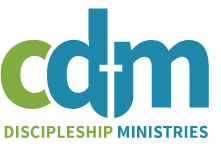If you have already shown the Truth Project to the people in your church you know what a great service Dale Tackett (PCA elder from Village seven) has done for us with this worldview series.
Dale, who works for Focus on the Family, now has a follow-up series that is aimed at high school and college age specifically. If you go to the website (www.trueu.org) there are helpful promos of the series.
There is a second series coming next spring. This series is on helping prepare young folk for the onslaughts of college by helping them defend themselves in the area of the existence of God. The second series will be Is the Bible Reliable?
Click here to read entire publication in PDF (Acrobat Reader required)
This first series is brilliantly taught by Dr. Stephen Meyer, who is a senior fellow at the Discovery Institute near seattle. He has spent 20 years researching cosmology, biology and metaphysics in order to be able to explain the existence of a creator God. He is a Ph.D. from Cambridge and an expert on the subject of Intelligent Design.
The website has a downloadable 40 minute presentation which serves as an introduction showing why you need to use this series with your teenagers. It is also well worth showing to the entire church. The series will be available in November.

 Several books on having a Christian mind have been in print for a good number of years. We will be mentioning at least one of these in each review section of Equip to Disciple for the purpose of making certain that you have read them. If you have not read them, you will want to do so while they are still available. This book, The Christian Mind, by Harry Blamires is one of those books, first published in 1963.
Several books on having a Christian mind have been in print for a good number of years. We will be mentioning at least one of these in each review section of Equip to Disciple for the purpose of making certain that you have read them. If you have not read them, you will want to do so while they are still available. This book, The Christian Mind, by Harry Blamires is one of those books, first published in 1963. What does an author do when he writes an academic youth ministry book that is critically acclaimed in youth ministry circles and sells beyond all expectations? Simple. He writes another book on the same topic only this time he joins with another expert in the field and moves from the academic into the practical. Dr. Chap Clark, Fuller Theological Seminary professor, made the compelling case in his book Hurt: Inside the Mind of Today’s Teenager that teenagers in today’s culture have been systemically abandoned by the adults and institutions that have traditionally cared for them. The resulting effect of this abandonment is a generation of hurting, disenfranchised young people who, somewhat ironically, are actually craving relationships with the very same adults who have abandoned them. Clark’s first book served as a wake up call for anyone who works with or cares for teenagers, from parents to school teachers to youth ministry workers. In the follow up book When Kids Hurt,Dr. Clark joins with Steve Rabey, editor of YouthWorker Journal, to further explain the ramifications of a generation of teenagers who have been abandoned and offer some well-seasoned advice on how adults should address these issues.
What does an author do when he writes an academic youth ministry book that is critically acclaimed in youth ministry circles and sells beyond all expectations? Simple. He writes another book on the same topic only this time he joins with another expert in the field and moves from the academic into the practical. Dr. Chap Clark, Fuller Theological Seminary professor, made the compelling case in his book Hurt: Inside the Mind of Today’s Teenager that teenagers in today’s culture have been systemically abandoned by the adults and institutions that have traditionally cared for them. The resulting effect of this abandonment is a generation of hurting, disenfranchised young people who, somewhat ironically, are actually craving relationships with the very same adults who have abandoned them. Clark’s first book served as a wake up call for anyone who works with or cares for teenagers, from parents to school teachers to youth ministry workers. In the follow up book When Kids Hurt,Dr. Clark joins with Steve Rabey, editor of YouthWorker Journal, to further explain the ramifications of a generation of teenagers who have been abandoned and offer some well-seasoned advice on how adults should address these issues.